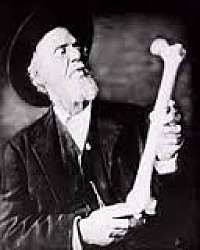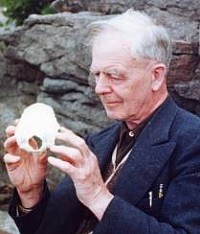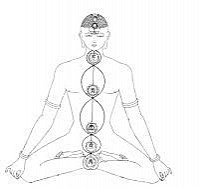Origins/History
"To find health should be the object of the doctor. Anyone can find disease."
-Andrew Taylor Still, MD, DO
Dr. Andrew Taylor Still was the inventor of what is known as Osteopathy. In a period of deep grief he had some insights about healing and medicine, which lead him to begin integrating the ancient art of bonesetting, as practiced by indigenous peoples, into his medical practice.
Osteopathy is founded upon the principle of optimization, or the premise that the body is always in the process of attaining and maintaining its best possible form through self-healing and regulation. This principle is carried into cranial osteopathy and craniosacral therapies and underlies the practitioner's disposition as a facilitator of the body's own self-corrective agenda.
Dr. William Sutherland, the osteopath who began the practice and lineage of cranial osteopathy, began his lifelong work with an insight:
While examining the bones of a disarticulated cranium, he noticed that the sutures were "beveled like the gills of a fish" to allow for respiration.
Despite the commonly held western medical view that cranial bones fuse to the point of immobility, Sutherland saw that the joints of the cranial bones were actually designed for minute but vital movements. His life's work became the study of this motility and its importance in healthy physiological functioning. He began by designing a helmet that allowed him to 'lock down' the motion of a particular cranial bone or joint to discover the effects of immobility in specific areas of the cranium. He used this helmet experimentally on himself for the next several years, and once satisfied with his findings, began using the knowledge he had gained to treat patients, with much success. Through many years of research and practice, Sutherland began to make unexpected discoveries about how the body functions and heals. His discovery of the Cranial Rhythmic Impulse (CRI), or the ceaseless pulse created by the movement of cerebrospinal fluid, became foundational to what would become craniosacral therapy.
Biodynamic Craniosacral Work
The branch of cranial work known as Biodynamics is based on Sutherland's late and culminating insights about the nature of healing. The essence of this insight is that it is not the practitioner, but the "tide" that makes the changes in the body. The "tide" is the subtle ordering and organizing principle that is present from conception until death, and is constantly at work maintaining the best possible balance and homeostasis. He began to experience and trust in this essential and ever-present "Intelligence" within the system, discovering that deep and lasting change and healing arise from this potency within the patient, and from the practitioner's state of presence rather than through motion testing, techniques, or manual adjustments. These teachings were carried on and taught by some of his students and became the branch of cranial work known as Biodynamics.
Though craniosacral therapies as we know them in the modern western world stem from the osteopathic lineage, cranial manipulation is not a new concept. The therapeutic adjustment of cranial bones is known to be at least as old as Ayurveda, the oldest known complete medical science, originating in India over 5000 years ago. Ancient Egyptians also developed a science of cranial manipulations, as did people of the Paracus culture in Peru circa 2000 BC.



